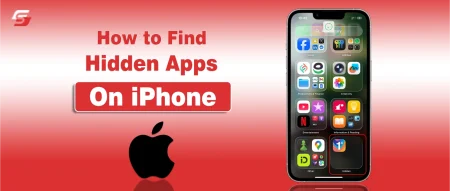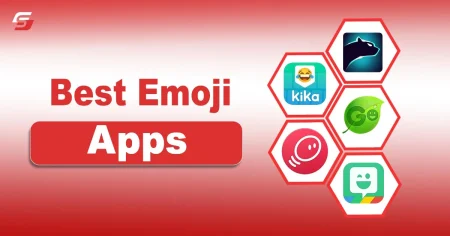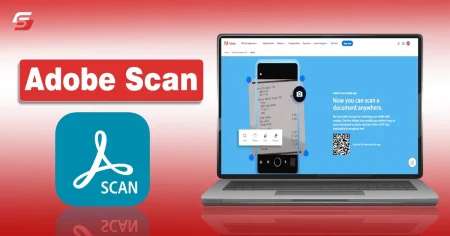Have you ever wondered why some presentations captivate an audience instantly while others lose attention within minutes? The difference often lies in one simple tool, the slide deck. Once just a sequence of slides, it has evolved into a strategic communication asset used in board meetings, classrooms, and marketing pitches worldwide.
But here’s the catch: while slide decks make ideas more visual and organized, they can also limit creativity or distract from the real message. Are they a powerful storytelling medium or just a digital helper? In this guide, we uncover the true pros and cons of slide decks, revealing when they elevate your message, and when they quietly hold it back.
What Is a Slide Deck?
A slide deck is a structured collection of slides created to present information in a visual and organized format. Each slide in a slide deck contains concise text, graphics, charts, or multimedia elements designed to support a speaker’s narrative. Slide decks are primarily used to communicate ideas clearly and maintain audience engagement during meetings, lectures, or public presentations.
Modern slide decks are created using digital tools such as Microsoft PowerPoint, Google Slides, Apple Keynote, or Canva. These platforms allow creators to design, format, and present slide-based content efficiently.
A well-designed slide deck combines visual storytelling, content hierarchy, and brand consistency, making it one of the most widely adopted communication tools in both corporate and academic settings.
Core Purpose of a Slide Deck
The core purpose of a slide deck is to deliver complex information in a simplified and visual format that enhances comprehension and retention. A slide deck acts as a visual framework that supports verbal communication and guides the audience through key points logically.
Key purposes of a slide deck include:
- Information structuring: Organizes ideas into sequential slides for clarity.
- Visual reinforcement: Uses charts, images, and infographics to strengthen understanding.
- Audience engagement: Maintains attention through balanced visuals and concise messaging.
- Message consistency: Ensures alignment between spoken content and on-screen elements.
A slide deck also serves as a presentation guide for the speaker, helping maintain flow and reducing dependency on written notes. In professional settings, slide decks convey data, progress reports, and strategies in a format that is easy to digest for teams and stakeholders.
Common Uses in Business, Education, and Marketing
The use of slide decks varies across industries, but their role remains consistent, to communicate information effectively.
- Investor pitch decks that outline business models, financial data, and growth plans.
- Corporate presentations for internal meetings, project updates, and quarterly reviews.
- Training sessions and onboarding materials that standardize learning.
- Lectures and classroom presentations for visual learning.
- Academic research defenses where slides highlight data and findings.
- Workshops and seminars that require structured topic delivery.
- Create client proposals and campaign strategies.
- Showcase brand storytelling with visuals and slogans.
- Develop sales presentations that highlight key features and benefits.
These examples show how slide decks function as universal tools that combine design, clarity, and structure to support communication across disciplines.
How Slide Decks Differ from Presentations or Slideshows
The difference between a slide deck, a presentation, and a slideshow lies in their scope, structure, and delivery.
| Term | Definition | Primary Use |
| Slide Deck | A complete collection of individual slides arranged in a logical order. | Used as the visual component of a presentation. |
| Presentation | The act of delivering content verbally, often supported by a slide deck. | Business meetings, academic talks, and events. |
| Slideshow | An automated or sequential display of slides, often image-based. | Informal uses like photo sharing or simple visual displays. |
In essence, the slide deck is the visual medium, while the presentation is the delivery process. A slideshow is typically passive and used when narration is not required. Professionals prefer the term slide deck when referring to designed, branded, and structured sets of slides intended for formal communication.
Key Advantages of Slide Decks
A slide deck offers several advantages that make it one of the most effective communication tools in professional, academic, and marketing environments. The primary benefit of a slide deck lies in its ability to combine visuals and structured text to improve clarity and engagement. Modern slide decks enhance comprehension, keep audiences focused, and help presenters convey authority and professionalism.
Enhances Visual Communication
A slide deck enhances visual communication by converting abstract ideas into visual elements that are easier to understand and remember. Visual content such as graphics, charts, and images reduces cognitive load and helps the audience grasp complex information quickly.
Use of graphics, charts, and images for clarity:
- Graphics illustrate relationships between data points and concepts.
- Charts (bar, pie, line) summarize quantitative information for immediate comprehension.
- Images reinforce emotional connection and visual appeal.
Simplifies complex information:
A slide deck breaks large text into digestible visuals that convey meaning at a glance. Data-heavy topics like market reports or academic results become easier to interpret when visualized through charts and icons. This combination of design and structure makes slide decks central to visual storytelling and effective information delivery.
Increases Audience Retention
A slide deck increases audience retention by using interactive and engaging presentation formats. The inclusion of animations, transitions, and speaker notes supports both audience engagement and presenter confidence.
Interactive and engaging presentation formats:
- Motion effects maintain attention during transitions.
- Clickable links or embedded media encourage participation.
- Balanced visuals prevent monotony in longer sessions.
Support for speaker notes and animations:
- Speaker notes act as cues for presenters to maintain consistent delivery.
- Animations highlight step-by-step information and sustain interest.
Through controlled pacing and design consistency, slide decks help audiences retain key messages, data points, and visual impressions even after the presentation ends.
Professional Appeal
A slide deck carries strong professional appeal because it enables presenters to communicate ideas with structure, design discipline, and authority. In business and academia, the layout and style of a slide deck reflect the presenter’s credibility.
Helps presenters convey credibility and structure:
- Organized slide sequences show logical flow and preparation.
- Professional templates and typography strengthen the speaker’s image.
- Consistent formatting supports clarity and brand alignment.
Widely accepted in corporate and academic contexts:
- Companies use slide decks for reports, training, and stakeholder communication.
- Universities and research institutions rely on slide decks for teaching and thesis defense.
By combining organization with visual consistency, a slide deck becomes a standard presentation medium that represents professionalism and reliability. While discussing digital presentation tools, you may also want to explore how other document and productivity apps perform, read our detailed Adobe Scan Review to see how it transforms paper documents into digital assets seamlessly.
Flexibility Across Platforms
A slide deck offers flexibility across multiple platforms and file formats, making it adaptable to diverse presentation needs. Tools such as Microsoft PowerPoint, Google Slides, Apple Keynote, and Canva allow seamless design, editing, and sharing.
Compatibility with PowerPoint, Keynote, Google Slides, etc:
- Slide decks maintain layout integrity across software ecosystems.
- Cloud-based tools enable real-time collaboration and remote access.
- Templates and transitions can be imported or exported easily.
Easy sharing through PDFs, cloud links, or embedded decks:
- Export options like PDFs ensure universal accessibility.
- Cloud platforms such as Google Drive and OneDrive support instant sharing.
- Embedded decks can be placed on websites, emails, or social media posts.
This flexibility allows a slide deck to serve as a digital asset that adapts to online meetings, offline presentations, and content repurposing for multiple channels.
Main Disadvantages of Slide Decks
A slide deck is an effective presentation tool, but it also carries several disadvantages that can reduce its impact when not designed or delivered properly. Poor structure, excessive content, and technical limitations often undermine the visual and communicative value of a slide deck. Recognizing these weaknesses helps presenters improve content design, engagement, and technical readiness.
Risk of Overloading Slides
A slide deck often loses effectiveness when slides are overloaded with text or visual elements. Too much text or cluttered visuals distract the audience and reduce message clarity. Instead of highlighting key ideas, such slides create cognitive overload, making it harder for viewers to process information.
Too much text or cluttered visuals reduce impact:
- Long paragraphs and dense bullet lists lower readability.
- Overuse of colors, fonts, or graphics breaks visual hierarchy.
- Audiences spend more time reading than listening to the presenter.
Common beginner mistake: reading slides word-for-word:
Presenters who rely heavily on reading directly from slides weaken their verbal connection with the audience. This approach makes the presentation monotonous and eliminates opportunities for storytelling or emphasis.
To avoid this, a slide deck should contain concise text supported by visuals, allowing the presenter to elaborate verbally.
Requires Design and Time Skills
A slide deck requires significant design effort and time management skills to achieve a professional outcome. Effective decks demand understanding of layout, color balance, and visual hierarchy, skills not every presenter possesses.
Need for proper formatting, templates, and alignment:
- Proper alignment and spacing maintain consistency and readability.
- Templates simplify formatting but still require customization.
- Fonts, contrast, and image placement affect overall visual flow.
Not everyone is skilled at layout or visual hierarchy:
Designing slides involves balancing text and visuals to create focus. Poor design leads to clutter or empty space, reducing audience comprehension. Inexperienced users often rely on default templates, resulting in generic and unengaging decks.
Professional slide design tools like Canva, PowerPoint Designer, or Keynote templates can improve results but still require creative input and time investment.
Limited Interactivity Without Presenter
A slide deck becomes less engaging when viewed without a live presenter. Static slides lack voice modulation, storytelling, and audience feedback, which are essential for maintaining interest.
Static decks lose engagement when shared standalone:
- Without narration, slides may feel incomplete or unclear.
- Audiences might miss context that the presenter normally provides.
- Self-viewed decks rely solely on visuals and minimal text for comprehension.
Video or live demonstrations may outperform static decks:
In digital communication, video presentations, webinars, or interactive demos often achieve better engagement. These formats combine visuals with tone, pacing, and interactivity, offering a richer experience than a static slide deck.
Slide decks work best as supportive tools, not as independent communication materials, unless carefully designed for self-reading.
Technical and Compatibility Issues
A slide deck depends on software compatibility and hardware reliability, which can create technical problems before or during a presentation. File corruption, outdated software versions, or missing fonts can disrupt delivery.
File corruption or version mismatches:
- Files created in PowerPoint may not render identically in Google Slides or Keynote.
- Older file formats (.ppt) may not open in newer applications.
- Large media files increase the risk of loading errors or crashes.
Dependency on devices, projectors, or online platforms:
- Slide decks require functioning projectors, screens, or stable internet connections.
- Cloud-based presentations depend on Wi-Fi availability and platform stability.
- Hardware issues can delay or interrupt live sessions.
Preparing backup formats such as PDF exports or offline copies can minimize these risks and ensure smooth presentation delivery.
Tips to Maximize the Pros and Minimize the Cons
A slide deck becomes most effective when designed and delivered with clarity, simplicity, and visual balance. The goal is to amplify its strengths, visual storytelling and structured presentation, while avoiding weaknesses like clutter or technical issues. Applying practical design and presentation habits ensures that every slide enhances communication rather than distracts from it.
Keep Slides Simple and Minimalistic
A slide deck achieves clarity when its design remains simple and minimalistic. Overloaded slides reduce comprehension and distract the audience from key points. Minimalism focuses attention on essential content and visuals.
Practical guidelines for simplicity:
- Limit text to short phrases or key data points.
- Use whitespace to separate visual elements and improve readability.
- Avoid unnecessary animations, decorative fonts, or color overload.
A minimal slide deck allows the audience to focus on the presenter’s message instead of decoding cluttered visuals. This design principle supports both presentation clarity and cognitive ease, leading to better audience retention.
Focus on One Idea per Slide
A slide deck delivers the strongest impact when each slide presents a single, focused idea. Concentrating on one concept per slide reduces confusion and strengthens information recall.
Implementation steps:
- Assign each slide a single title that reflects its main point.
- Use bullet lists or visuals to expand only on that concept.
- Move secondary information to following slides or appendices.
By organizing slides this way, the presentation follows a clear narrative flow. This approach ensures that the audience processes one message at a time, improving retention and presentation pacing.
Use Consistent Design and Typography
A slide deck maintains professional quality when it uses consistent design, typography, and color scheme throughout. Design consistency creates brand alignment and improves audience trust.
Elements of design consistency:
- Use the same font family and size hierarchy across all slides.
- Stick to a defined color palette aligned with brand identity.
- Keep margins, logos, and image placements uniform.
Consistent design not only strengthens visual identity but also improves comprehension. A unified format helps the audience follow transitions without distraction. Popular tools like PowerPoint templates, Google Slides themes, and Canva brand kits simplify this process while maintaining design discipline.
Rehearse Delivery and Audience Timing
A slide deck delivers optimal results when the presenter rehearses the flow, timing, and transitions. Rehearsal ensures smooth delivery and alignment between verbal explanation and visual content.
Effective rehearsal practices:
- Time each slide to match speaking duration.
- Practice slide transitions to maintain natural pacing.
- Adjust animations and builds to support key points.
Rehearsing also allows presenters to identify redundant slides, technical gaps, or missing context. Confident delivery, supported by controlled timing, improves audience engagement and strengthens message delivery.
For professionals who often share slide decks or presentations online, securing your domain and files is crucial, our Cloudflare Registrar Review explains how Cloudflare ensures online safety and reliability.
Final Words | Our Take on Whether Slide Decks Are Worth Using
In our view, slide decks remain one of the most effective tools for delivering structured and persuasive communication, provided they are used with purpose.
We believe their strength lies in simplifying complex ideas, supporting verbal explanations, and visually engaging audiences across business, education, and marketing settings. However, our experience shows that the true value of a slide deck depends on moderation and design balance.
When overloaded with text or lacking interaction, it quickly loses its impact. In some cases, we recommend considering alternative formats such as reports for detailed analysis, videos for dynamic engagement, or infographics for quick visual summaries.
Overall, our suggestion is clear: use slide decks when clarity, focus, and presentation flow are essential, they remain a timeless tool for professional and effective communication.
People Also Ask About the Slide Decks
A slide deck is used to visually organize ideas and support spoken communication in business, education, and marketing presentations.
Slide deck enhances visual communication, simplifies complex data, and gives presentations a professional and structured look.
A slide deck can become cluttered, require strong design skills, and lose engagement without an active presenter.
A slide deck refers to the full collection of slides, while a slideshow is the act of displaying them during a live or recorded presentation.
Professionals use slide decks because they’re compatible with tools like PowerPoint and Google Slides and can be easily shared across platforms.











